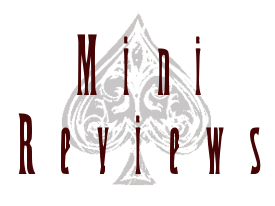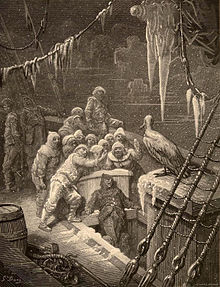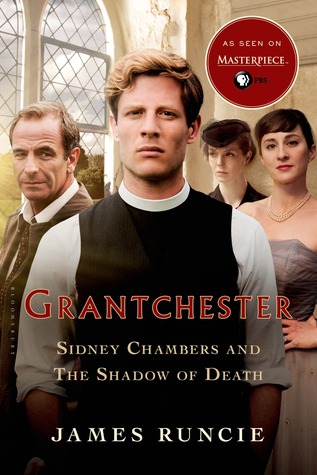Katherine Nabity's Blog, page 167
June 18, 2016
Deal Me In, Week 24 ~ “The Story of the Eldest Princess”
Hosted by Jay @ Bibliophilopolis
“The Story of the Eldest Princess” by A. S. Byatt
Card picked: Six of Hearts
From: The Djinn in the Nightengale’s Eye
Thoughts: Once upon a time (and this is how Byatt begins this story), the sky over a kingdom between the mountains and the sea turns green. It’s still a beautiful sky made up of all the possible shade of green, but…well, it’s green not blue. The wise men and witches of the kingdom suggest that a Quest must be undertaken to restore the sky. The single silver bird and her nest of ash-branches must be retrieved. The King and Queen have three daughters. It is, of course, decided that the eldest daughter must be the one to go on this Quest.
The eldest daughter willingly sets out because she feels it’s her duty to help the kingdom. But as she walks along the Road (and she must not stray from the Road), she remembers all the tales she’s read about Quests. She realizes that the eldest is always the first to go on a Quest, but it’s never the first who succeeds. The first always fails in some way—turned to stone, imprisoned in a vault, cast into magic sleep. Rescuing the first becomes part of the Quest for some later person. This doesn’t sit well with the eldest princess. It seems terrible to waste five or seven years of life as a statue. If she isn’t going to succeed in finding the single silver bird and her ash-branch nest, will it make any difference if she decides to leave the Quest of her own volition? Surprisingly, it’s the nudgings of a scorpion, a poisonous toad, and a cockroach, that make the decision seem reasonable.
Sometimes, a story comes along at a good moment, as “The Story of the Eldest Princess” has for me. Stepping off the Road is a scary, counter-intuitive thing, but maybe it’s the better idea for the princess. The sky will be okay whether it’s green or blue.


June 15, 2016
Mini Bloggiesta Summer 2016

I have a free weekend and some work to do on my blog. It’s time for Bloggiesta! This is my first, I believe. I can definitely use the productivity boost.
Newsletter button
Clean-up templates
Clean-out media files
Review of The Nazi Seance


June 14, 2016
Mini Reviews, Vol. 4 ~ The Joys of Literary Tangents

Assignment #2 for the Frankenstein MOOC was discussion-board-based. The focus for Week 3 is going to be the literary references and allusions that Shelley uses. These things led me down an enjoyable literary rabbit hole over the weekend. I read all of these in the kitchen of my brother-in-law’s house. We live in great times when I can access three classics in as much time as it takes to type the titles into the search bar.
 Engraving by Gustave Doré
Engraving by Gustave Doré
“Rime of the Ancient Mariner” by Samuel Taylor Coleridge
I’ll be honest, after only one reading, there’s a lot I’m missing in this poem. Obviously, there is a Frankenstein connection involving sea-going misadventures and, I do believe, Shelley quotes the poem. Otherwise…themes of the consequences of actions? “Rime” seems to rely on the supernatural to dole out retribution, though Frankenstein’s creature is so super-human that he might as well be supernatural. I’ll give “Rime” another read after I finish Frankenstein.
 Harry Clarke’s 1919 illustration
Harry Clarke’s 1919 illustration
“A Descent into the Maelström” by Edgar Allan Poe
Not at all connected to Frankenstein, but I was reminded of it while reading “Rime of the Ancient Mariner.” It can be noted that “Maelström” and “Rime” do share structural features with Frankenstein—the frame story. The mariner in “Maelström” is relating his story to some poor schlub who is afraid of heights, while the ancient mariner in Coleridge’s poem waylaid a wedding guest (an interesting choice). In Frankenstein, we’re being told the tale by the mariner (Walton) who is relating the story Victor Frankenstein tells (who is relating the tale told to him by the monster…). “Maelström” is pretty tense once it gets going, but it has a slow start. It’s often counted as one of Poe’s ratiocination tales because the narrator figures out how to save himself through the observation of what’s going on around him.
 All the foreign language editions had better covers.
All the foreign language editions had better covers.
“Herbert West––Reanimator” by H. P. Lovecraft
Lovecraft is not my favorite weird author, but he has his place in the pantheon of horror. Someone on the MOOC discussion board mentioned Herbert West and, while I’ve seen the Stuart Gordon film, I hadn’t read the source material. There is definitely a few similarities between Herbert West and Victor Frankenstein. Both are interested in the reanimation of the dead and both pay for their transgressions against nature in the end. The difference is after West runs away from his first horrid creation, he tries again. And again. And again.
“Herbert West—Reanimator” is actually a set of six stories that were originally serialized. Lovecraft didn’t care for the tales (presumably written for the money) and they are considered some of Lovecraft’s poorest work (according to Wikipedia). Personally, I like these better than the other Lovecraft stories I’ve read. They are less ornate and move along at a good pace. The only problem? If you have any doubt about how racist Lovecraft can be, read the third installment, “Six Shots by Moonlight.” Or, you know, don’t.


June 13, 2016
It’s Monday, What Are You Reading? (6/13)
Short update since Eric and I are house/teenager-sitting through sometime this afternoon. Roughly, I’m still working on the same books.



I’ll probably finish The Nazi Seance this week after knocking out a good chunk this weekend.
I’m halfway through the Frankenstein class and probably more than halfway through the text. I might read ahead and finish it.
A tangent on the Frankenstein discussion boards has led me to Lovecraft’s Herbert West, Reanimator stories.
 It’s Monday! What Are You Reading, hosted by Book Date!
It’s Monday! What Are You Reading, hosted by Book Date!


June 11, 2016
Deal Me In, Week 23 ~ “Papa at Ketchum”
Hosted by Jay @ Bibliophilopolis
“Papa at Ketchum” by Joyce Carol Oates
Card picked: King of Hearts
From: Wild Nights!: Stories About the Last Days of Poe, Dickinson, Twain, James, and Hemingway
Thoughts: I have a confession to make: I haven’t read any Hemingway. There’s a big early 20th century hole in my literary education and Hemingway has fallen through it. I also have a preconceived notion of Hemingway, that he is the ideal of machismo. This doesn’t really endear him to me despite the literary merits of For Whom the Bell Tolls or Farewell to Arms.
Joyce Carol Oates’ “Papa at Ketchum,” set during Hemingway’s final days in Ketchum, Idaho, doesn’t do anything to change my opinion. She paints Hemingway in strokes of self-centeredness, misogyny, and a hunter’s blood-lust. It’s age that has taken him down a notch, although he still believes he seduced one (or maybe two) of the nurses as the Mayo Clinic where he’d recently undergone treatment. In general, this isn’t a pleasant story. It’s long. It rambles. It’s a curious story on which to end this anthology. (I’ve now read the first and last of this collection. I have the middle three to go.)


June 8, 2016
What Else Wednesday ~ What Am I Watching, Vol. 1
 What Am I Watching: an occasional series.
What Am I Watching: an occasional series.

Peaky Blinders (2013-present), created by Steven Knight
After watching two seasons, there isn’t anything I don’t love about Peaky Blinders. The cast, the writing, the setting, and especially the anachronistic soundtrack are all great. I guess I’m okay with giving up accuracy for style. My only problem is having “Red Right Hand” stuck in my head for extended periods. If you can call that a problem.
Stark Raving Mad (1999), created by Steven Levitan (Modern Family)
Remember that sit-com with Tony Shalhoub as an eccentric horror writer and Niel Patrick Harris as his germaphobe editor? You don’t? Not surprising. Though it did well critically, Stark Raving Mad only lasted a season. Despite the image at left, the series doesn’t seem to be widely available, so I don’t feel too bad sharing a link to a VHS rip of the series.
Tubi TV
Not a show, but a streaming service. Like Crackle, it’s totally above board and free, but with commercials. The offerings are varied; there are some pretty good movies mixed in with some dubious stuff. It’s kind of like visiting Blockbuster late on a Friday night if you’re old enough to remember that. Their streaming on PC isn’t as good as Hulu, but it’s decent and they’ve shown improvement in the last few months.
Currently, I’m enjoying their horror selection which includes such solid classics as An American Werewolf in London, Rosemary’s Baby, Candyman, Audrey Rose, and Jacob’s Ladder.


June 7, 2016
Review ~ The Improbability Principle
In The Improbability Principle, the renowned statistician David J. Hand argues that extraordinarily rare events are anything but. In fact, they’re commonplace. Not only that, we should all expect to experience a miracle roughly once every month.
But Hand is no believer in superstitions, prophecies, or the paranormal. His definition of “miracle” is thoroughly rational. No mystical or supernatural explanation is necessary to understand why someone is lucky enough to win the lottery twice, or is destined to be hit by lightning three times and still survive. All we need, Hand argues, is a firm grounding in a powerful set of laws: the laws of inevitability, of truly large numbers, of selection, of the probability lever, and of near enough. (via Goodreads)
I like statistics. I’m not saying that I understand much about statistics or that I have any natural aptitude for anything involving numbers (in fact, the opposite can be easily argued), but familiarity with the notions of statistics is a good thing to have.
The Improbability Principle takes a look at where our thought processes go wrong when we consider rare events. This is less about math, in some cases, and more about psychology. Our brains don’t naturally handle “rare” very well. The improbability principle is kind of a list of questions to ask when deciding if something is a miracle or a reasonable statistical happening.
Hand’s writing is very accessible and pretty light. He uses lots of examples, but I was glad to have a decent science background and a little bit of understanding of statistics going in. The books is a little repetitive, but that highlights that fact that the “laws” that make up the improbability principle are interconnected. Applying one often leads to applying others. Hand didn’t worry too much about trying to isolate each law as he discussed them. Overall, The Improbability Principle is an interesting and well presented set of concepts.
Publishing info, my copy: hardback, Scientific American / Farrar, Straus and Giroux, 2014
Acquired: Tempe Public Library
Genre: Nonfiction


June 6, 2016
Magic Monday ~ Now You See Me Reading
I like Mondays. I also like magic. I figured I’d combine the two and make a Monday feature that is truly me: a little bit of magic and a look at the week ahead.
You know what I’ll be doing Friday afternoon:
It’s Monday, What Are You Reading?



I’m solidly back to reading after that annoying slump. And I’m working on three of my #20BooksOfSummer!
Frankenstein by Mary Shelley – I’ve read the 1832-ish edition in college and now I’m reading the 1818 edition for an online class.
The Nazi Seance by Arthur J. Magida – A library book, nonfiction.
Sidney Chambers and the Shadow of Death by James Runcire – My online/Kindle book for when I don’t want to balance a hardback or think too much.
Also, a pretty meaty Joyce Carol Oates story for Deal Me In.
 It’s Monday! What Are You Reading, hosted by Book Date!
It’s Monday! What Are You Reading, hosted by Book Date!
What Am I Writing?
I have Frankenstein homework.
I need to write the introduction for David P. Abbott and the Open Court. I also need to find out how much of a pain in the butt adding images is going to be. And work on the cover.


June 4, 2016
Deal Me In, Week 22 ~ “Pate de Foie Gras”
Hosted by Jay @ Bibliophilopolis
“Pate de Foie Gras” by Isaac Asimov
Card picked: Five of Clubs
From: Asimov’s Mysteries
Thoughts:
I couldn’t tell you my real name if I wanted to, and, under the circumstances, I don’t want to. … I was not the first person to have the honor of meeting The Goose.
Instead of going for a whodunit in “Pate de Foie Gras,” Asimov presents a scientific mystery in the guise of a shadowy, cloak and dagger fantasy. But if this story were an episode of The X-Files, it wouldn’t be one of those super serious arch stories. It would be “Jose Chung’s From Outer Space,” humorous and meta in its telling.
Our unnamed scientist, in the employ of the Department of Agriculture, visits a farmer who has been very interested in rearing geese. Or rather, a goose. A goose with the rather interesting knack for laying golden eggs.
Asimov is probably at his best when he’s not being too serious and when the story involves chemistry and biochemistry. These were the sciences that were his forte. They have also aged better than his extrapolations about computers and space exploration. Overall, “Pate de Foie Gras” is a fun, science fiction story.


June 1, 2016
May Reading Wrap-Up

May was pretty slumpy for me. Nothing on my shelves tempted me. I went to the library, but that was slow reading too. Finally, I impulse checked out a few things from the digital library—and *that* broke my slump. So, not a great month for #readMyOwnDamnBooks, but I have high hopes going into 15-ish Books of Summer.
Finished in May
Central Station by Lavie Tidhar
My Best Friend’s Exorcism by Grady Hendrix
Smoke Gets in Your Eyes by Caitlin Doughty
Additions to my Library
As a concession to my ignored shelves, I tried to not add more. Mostly successful, I guess.
AbrakaPOW by Isaiah Campbell, 5/6/16, NetGalley, ARC (requested before May)
Smoke and Mirrors by Mike Costa, Jon Armstrong & Ryan Browne, 5/30, Comixology, Readathon winnings!








